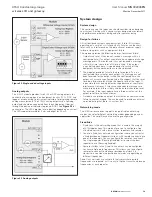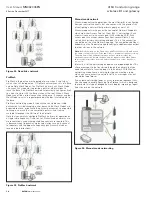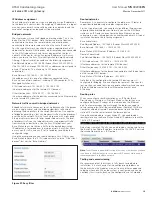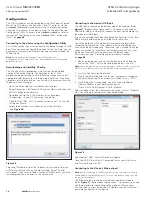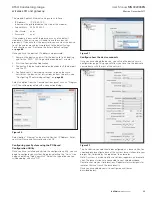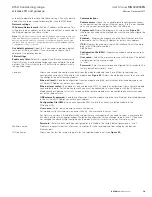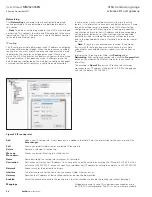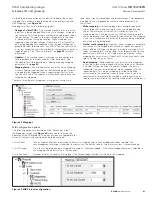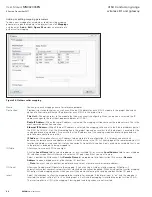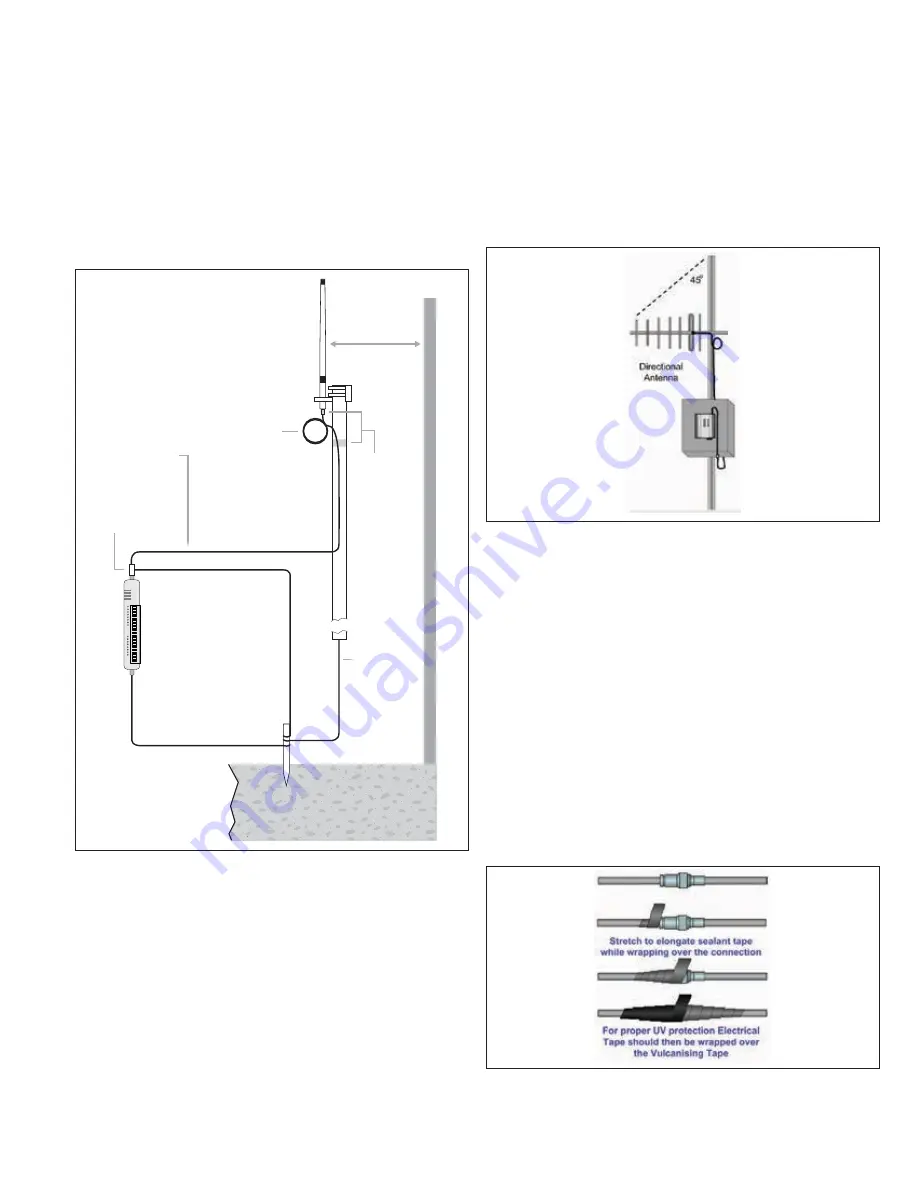
7
User Manual
MN032006EN
Effective December 2017
415U Condor-long-range
wireless I/O and gateway
EATON
www.eaton.com
Dipole and Collinear antennas
Dipole and collinear antennas transmit the same amount of radio
power in all directions, and are easy to install and use because they
do not need to be aligned to the destination. The dipole antenna
does not require any additional coaxial cable. However, a cable must
be added if using any of the other collinear or directional antennas.
In order to obtain the maximum range, collinear and dipole antennas
should be mounted vertically, preferably at least one wavelength
away (see
Figure 9
for distances) from a wall or mast and at least
3 ft (1 m) from the radio module.
Earth Stake
For maximum
range, install
above local
obstructions.
Earth Conductor
at least 5 AWG
(16 mm2)
*
Wavelength:
340MHz = 35” (88cm)
400MHz = 30” (75cm)
480MHz = 25” (63cm)
Weatherproof
Connections
(recommended:
3M™ 23 self-
bonding tape)
Mast
Coaxial Cable
GND
at least 11 AWG (4 mm2)
Stress
Relief
Loop
Antenna
*
GND
Surge Arrestor
(recommended)
415U-2
Provide good ground
connection to mast,
module, and surge
arrestor.
If ground conditions
are poor, use more
than one stake.
1 Wavelength
(minimum)
Connect Coax to
building earth in
accordance with
6.2 g) and 6.2 i) of
IEC60728-11:2005
Figure 9. Antennas installation—Collinear/Dipole
Directional antennas
A directional antenna provides high gain in the forward direction,
but lower gain in other directions. This type of antenna may be used
to compensate for coaxial cable loss for installations with marginal
radio path. Directional antennas can be any of the following:
•
Yagi antenna with a main beam and orthogonal elements
•
Directional radome, which is cylindrical in shape
•
Parabolic antenna
Yagi antennas should be installed with the main beam horizontal,
pointing in the forward direction. If the Yagi antenna is transmitting
to a vertically mounted omni-directional antenna, the Yagi elements
should be vertical. If the Yagi is transmitting to another Yagi, the
elements at each end of the wireless link need to be in the same
plane (horizontal or vertical).
Directional radomes should be installed with the central beam
horizontal, and must be pointed exactly in the direction of
transmission to benefit from the gain of the antenna.
Parabolic antennas should be mounted according to the
manufacturer’s instructions, with the parabolic grid at the back and
the radiating element pointing in the direction of the transmission.
Ensure that the antenna mounting bracket is well connected
to ground.
Figure 9. Directional antenna
Installation tips
Connections between the antenna and the coaxial cable should
be carefully taped to prevent ingress of moisture. Moisture
ingress in the coaxial cable is a common cause for problems with
radio systems because it greatly increases the radio losses. We
recommend that the connection be taped—first with a layer of PVC
tape, next with vulcanizing tape (such as 3M™ 23 tape), and finally
with another layer of PVC UV-stabilized insulating tape. The first layer
of tape allows the joint to be easily inspected when troubleshooting
because the vulcanizing seal can be easily removed (see
Figure 10
).
Where antennas are mounted on elevated masts, the masts should
be effectively grounded to avoid lightning surges. For high lightning
risk areas, approved ELPRO surge suppression devices, such as
the CSD-SMA-2500 or CSD-N-6000, should be fitted between the
module and the antenna. If using non-ELPRO surge suppression
devices, the devices must have a “turn on” voltage of less than 90 V.
If the antenna is not already shielded from lightning strike by an
adjacent grounded structure, a lightning rod may be installed above
the antenna to provide shielding.
Figure 10. Vulcanizing tape

















